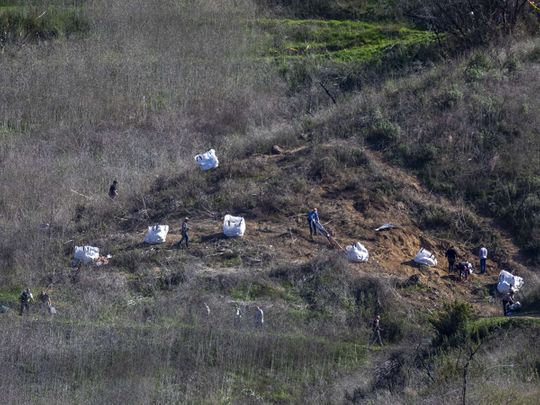
Los Angeles: The helicopter ferrying basketball legend Kobe Bryant and eight others that crashed into a hillside near Los Angeles Sunday wasn’t equipped with a device designed to warn pilots when they are in danger of hitting rising terrain.
Investigators cautioned they weren’t sure whether a so-called Terrain Avoidance and Warning System — a device required on airliners — would have prevented the crash, but said it might have helped the pilot be more aware as he neared the fog-shrouded hills.
The chopper was plummeting at more than 2,000 feet per minute as it made a sharp left turn, National Transportation Safety Board member Jennifer Homendy said at a briefing Tuesday.
“We know this was a high-energy impact crash,” Homendy said. “This is a pretty steep descent at high speed, so it wouldn’t be a normal landing speed.”
The Sikorsky S-76B helicopter operated by Island Express Helicopters Inc. was carrying Bryant, his 13-year-old daughter and seven others. The company wasn’t permitted by aviation regulators to fly into the kind of fog and clouds that apparently enveloped the aircraft in its final moments before crashing, NTSB’s investigator-in-charge William English said at the briefing.
It’s still not clear why the pilot took that path and investigators expect to take a year to 18 months before concluding the investigation. They plan to release a preliminary report within 10 days.
About a minute before the crash, the helicopter’s pilot radioed an air traffic controller to say he was climbing to avoid a cloud layer. Low clouds and fog were present in the area.
The controller replied, asking him what he planned to do. There was no reply.
It’s possible that the pilot was making an abrupt turn to escape the clouds, said John Cox, a former airline pilot and president of Safety Operating Systems.
When helicopters turn sharply, they tend to lose lift and can drop rapidly if pilots aren’t careful, Cox said.
“That rate of descent can pick up very quickly,” Cox said.








